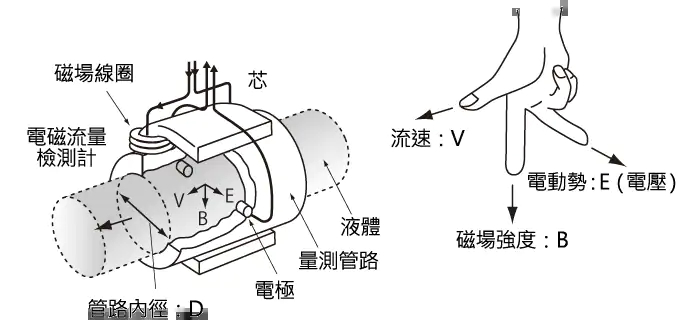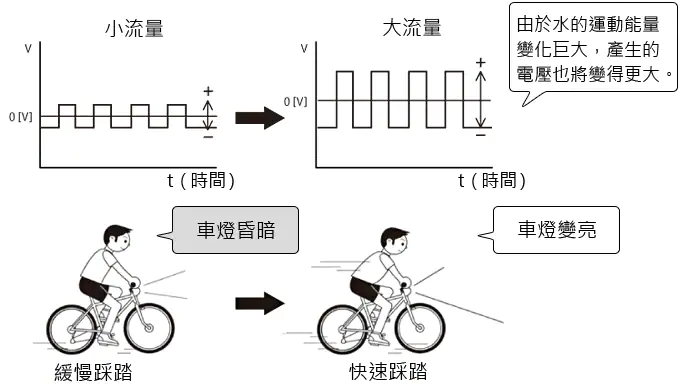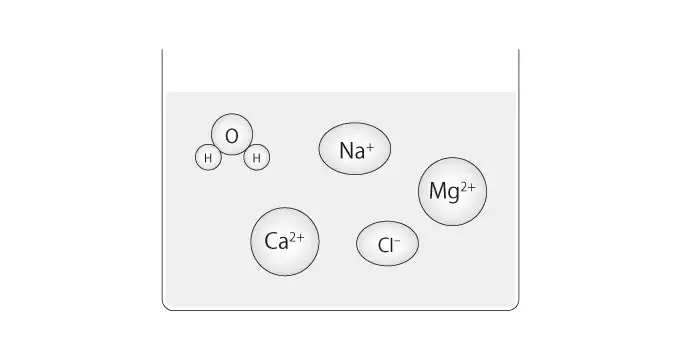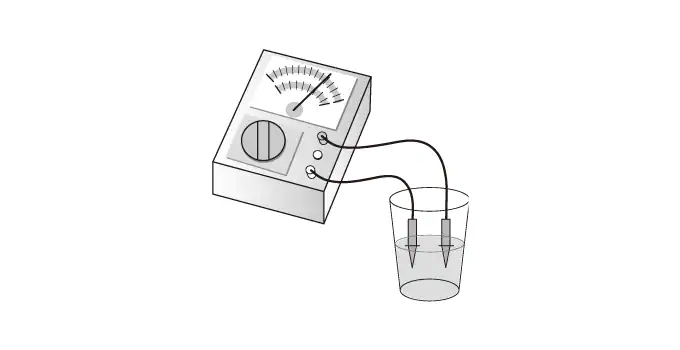Electromagnetic Flowmeter
There are many types of flowmeters, including electromagnetic flowmeters, Karman vortex flowmeters, impeller flowmeters, rotameter flowmeters, thermal mass flowmeters, pressure diaphragm flowmeters, ultrasonic flowmeters, and Corriere mass flowmeters.
Today's introduction is:Electromagnetic Flowmeter
Use of electromagnetic flowmeter to detect trafficFaraday's law of induction。
Inside the electromagnetic flowmeter there is an electromagnetic coil that generates a magnetic field, and electrodes that capture the electromotive force (voltage). It is because of this that the electromagnetic flowmeter can measure the flow even when there seems to be nothing in the pipeline.
According to Faraday's law of induction, a conductive liquid flowing in a magnetic field generates an electromotive force (voltage) that is proportional to the inner diameter of the pipe, the strength of the magnetic field, and the average flow rate. In other words, the flow rate of a liquid flowing in a magnetic field is converted into electricity. (E proportional to V × B × D)

As the flow rate changes, the electromotive force (voltage) captured by the electrodes also changes as described below.

The characteristics of electromagnetic flowmeter
According to the principles described above, electromagnetic flowmeters generally have the following characteristics.
Advantage:
・Not affected by the temperature, pressure, density or viscosity of the liquid
・Capable of detecting liquids containing contaminants (solids, bubbles)
・No pressure loss
・No moving parts (improves reliability)
Shortcoming:
・Cannot detect non-conductive gases and liquids
・Requires a short straight pipe
Conductivity
When using electromagnetic flowmeters, there is one thing to pay special attention to. Since the electromagnetic flowmeter is based on the law of electromagnetic induction, it can only detect the flow of conductive liquids. Whether it is a conductive liquid or not is determined by the conductivity.
So what is conductivity?
Conductivity is generally a value that expresses the ease with which electricity flows. The opposite value is resistivity, which indicates how difficult it is for electricity to flow. A common unit is S/cm. To determine how easily the current flows, place 1 cm2 electrodes 1 cm apart. Some examples of conductivity measured in practice are as follows, tap water has a conductivity between 100 and 200 μS/cm, mineral water is 500 μS/cm or more, and pure water is 0.1 μS/cm or less.
In order to calculate the conductivity, conditions such as the electrode area and the distance between the electrodes need to be correctly calculated. This makes calculations quite difficult. To determine the conductivity, it is generally measured with a conductivity meter (US$50-1000).
Why does water conduct electricity?
H2O itself is a stable molecule and does not conduct electricity.
So why does electricity flow in water?
The mystery of whether water can conduct electricity is determined by the presence of impurities in the water.

In addition to H2O (water molecules), water also contains Ca2+ (calcium ions) and Mg2+ (magnesium ions). The so-called hard water and soft water are distinguished according to the amount of ions contained in a given amount of water. Because these ions conduct electricity in water, tap water, groundwater, and other ion-rich waters are all conductive. Also, since pure water contains only H2O without any impurities, it cannot conduct electricity.
Rapid detection method
If you just want to confirm whether there is conductivity, you can use a standard multimeter. Set the tester to measure resistance and place the two probes in the liquid. Even if the needle of the tester is only moving slightly toward zero, it means there is electricity flowing. Conversely, if the pointer does not deviate from ∞, there is no conductivity. In this case, it can be determined that the electromagnetic flowmeter cannot be used for detection.
*As a precaution, confirmation with a conductivity meter is required.*

source:KEYENCE
Automatic control design planner ─ Longzhong Enterprise
Technical Advisory Services | Tel: 06-243-7822
- PREVThermal Mass Flowmeter
- NEXTImpeller Flowmeter

